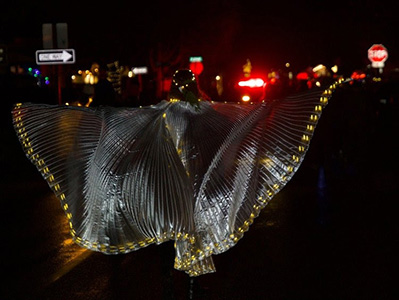||| FROM EXPLORE OUR PLANET |||
Killer whales (orca) ignite some debate when it comes to classification. There are known to be eleven different types of killer whale in our oceans, each with specific behaviours, language, physical differences, habitat and diet.
Many argue that these differences are indicative of not just animal subspecies, but also clearly defined species of killer whale. That these differences are, in fact, so large that orca are not just separate by type but species completely.
That debate still rages on, but until the scientific community can reach a consensus, killer whale ecotypes are what define their differences, not any sort of subspecies or class. The types of killer whale we know about are:
Northern Hemisphere Killer Whales
Resident Killer Whale

Resident killer whales are so-called because they have residential feeding patterns. They are only found in very distinct areas of the west coast of North America, including Alaska and Canada, and the east coast of Northern Asia, such as Russia and Japan. They stick to their local zones and have strong and closely-knit communities. They are exclusively fish-eating killer whales, which is likely due to the non-migratory pattern of their prey, allowing them to remain in certain areas without facing a lack of food. Resident orca as a smaller type of killer whale and display unique behaviours including specific social interactions and dialects, as well as young remaining with their mothers throughout their lives and not moving to other pods or groups.
Transient Killer Whale (Bigg’s)

Predominantly found between the Arctic and Baja California in Mexico, transient killer whales – otherwise known as Bigg’s Killer Whale – are migratory orca that move across vast ranges as they hunt large mammal prey. They live in small and close communities. The small community aspect ensures enough food upon a kill, which is harder to come by than the fish populations fed on by resident killer whales, which they often share waters with. Communities have specialisations, some Bigg’s killer whales hunt whales while others sea lions. Transient orca are one of the largest killer whale types, which is typical of mammal-eating killer whales.
Offshore Killer Whale

The offshore killer whale is the most elusive type of orca in the northern hemisphere. This is simply because they hunt in the open ocean away from inhabited shorelines and are therefore difficult to spot and observe. Offshore killer whales are found off the coast of California and range all the way to Russia. As is commonly observed in open ocean predators, offshore killer whale hunt in pods of around 50 animals, the largest communities of orca for any ecotype. This allows them to rely on others to help find food in such a vast hunting ground. It is unknown what exactly offshore killer whales feed on, although it is suspected that sharks make up the majority of their diet due to the wear seen on the teeth of offshore orca, thought to be caused by the rough skin of a shark. Offshore orca have been seen sharing food with older animals who likely cannot make kills due to damaged teeth from a life of shark hunting. It is also thought they kill fish. Offshore orca are the smallest killer whale in the northern hemisphere, which supports their large pod society and expansive food range, as they’re able to share and go longer without meals.
Northern Atlantic Type 1

The Northern Atlantic Type 1 is a small-sized killer whale that predominantly inhabits the regions of Iceland, Norway and Scotland. They are less specialised than other orcas, and will eat some small mammals like seals, although they are more commonly observed hunting herring and mackerel in the Norwegian Fjords. These are one of the only types of killer whales you can swim with. These killer whales have developed a very distinctive hunting pattern whereby they stun fish using their flukes by swiping at them aggressively after corralling them into ‘bait balls’. Type 1 Killer Whales live in tightly connect pod communities, and it is thought they may be developing separate characteristics and hunting patterns within these groups, which may potentially lead to the Type 1 Atlantic Killer Whale separating into even more refined types in future.
Northern Atlantic Type 2

Northern Atlantic Type 2 killer whales are found off the coasts of Norway and Iceland, although they’ve also been seen as far south as the Azores. Type 2 hunt large mammal prey such as dolphins and whales, which leads them to source their food from a wider range than Type 1, which can rely heavily on coastal fisheries and spawning grounds. Being feeders of larger prey, they themselves are large types of killer whale, one of the largest found. They’ve got keenly sharp teeth for shredding flesh off prey, and exhibit distinctive slopping eye patches.
Other Northern Hemisphere Types
Orca are found in all waters around the northern hemisphere, with distinct populations observed off the coast of eastern Canada as well as in the Strait of Gibraltar. These may be part of the current North Atlantic ecotypes, or they may be separate types of killer whale. Research is ongoing. There are also sightings of orca around Hawaii, potentially offshore killer whales or perhaps a new ecotype. Then there are the ‘tropical killer whales’ seen in the Gulf of Mexico and around the Caribbean Sea. These may be ranging Type 1 North Atlantic killer whales or they may be their own ecotype.
**If you are reading theOrcasonian for free, thank your fellow islanders. If you would like to support theOrcasonian CLICK HERE to set your modestly-priced, voluntary subscription. Otherwise, no worries; we’re happy to share with you.**








